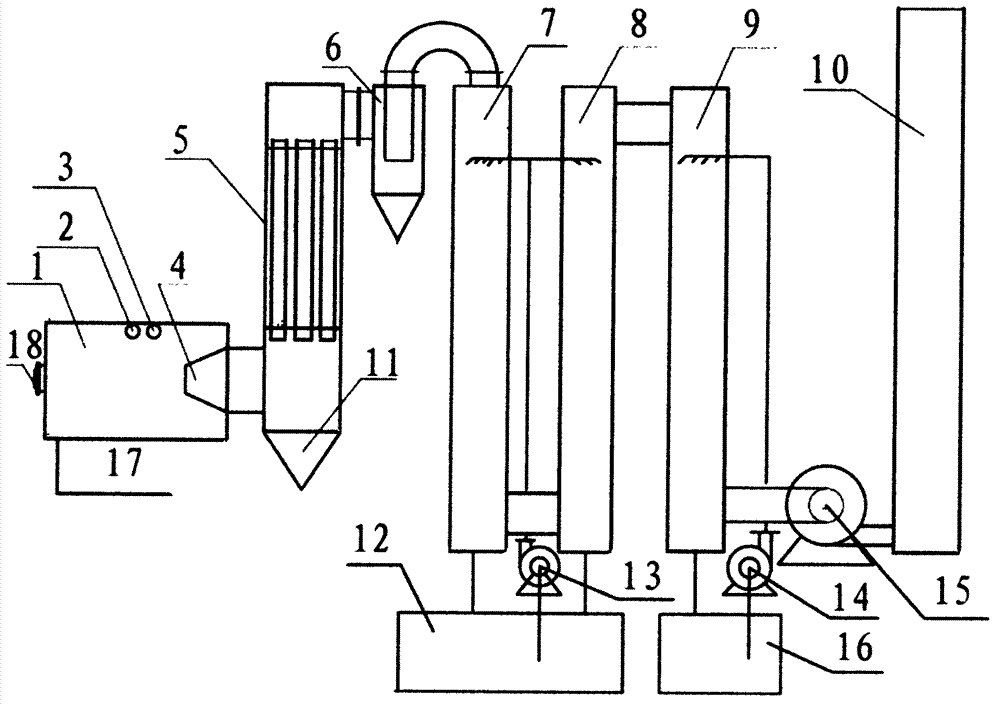Method for producing phosphoric acid through ground phosphate rock in fast hot-melting mode
A technology of phosphate rock powder and hot-melting method, applied in the chemical industry, can solve the problems of difficulty in recovering the heat energy of phosphorus sludge oxidation, consumption of sulfuric acid phosphogypsum pollutants, and lack of perfect industrial production equipment, and achieves easy realization of mechanized automation and convenient control. Easy, simple structure effect
- Summary
- Abstract
- Description
- Claims
- Application Information
AI Technical Summary
Problems solved by technology
Method used
Image
Examples
Embodiment Construction
[0015] 1. Raw materials: phosphate rock powder (P 2 o 5 Content: by 20%, CaO content: by 50%, SiO2 content: by 13%, grinding to fineness: 80-100 mesh). Silica powder (SiO 2 Content: by 90%, ground to fineness: 80-100 mesh). Ingredients ratio according to CaO / SiO 2 Calculated as 1.4. The mixing ratio of phosphate rock powder and silica powder: phosphate rock powder 100kg; silica powder should be added = (50÷1.4-SiO in phosphate rock 2 Content 13%)÷0.9=25.24kg. According to the mixing ratio of phosphate rock powder and silica powder: 100:25.24 (mass ratio), the ingredients are mixed and evenly mixed, and put into the feeding bin for later use. Coal combustion: (bituminous coal calorific value ≥ 5000 kcal, carbon content is 65%, fineness: 90 mesh pass rate ≥ 95%, coal ash melting point ≤ 1350 ℃), to control the oxygen content in the kiln gas 1-2.5 % (volume content) to regulate the addition of pulverized coal and hot air flow.
[0016]2. Ignition and heating: add wood or ...
PUM
| Property | Measurement | Unit |
|---|---|---|
| melting point | aaaaa | aaaaa |
Abstract
Description
Claims
Application Information
 Login to View More
Login to View More - R&D
- Intellectual Property
- Life Sciences
- Materials
- Tech Scout
- Unparalleled Data Quality
- Higher Quality Content
- 60% Fewer Hallucinations
Browse by: Latest US Patents, China's latest patents, Technical Efficacy Thesaurus, Application Domain, Technology Topic, Popular Technical Reports.
© 2025 PatSnap. All rights reserved.Legal|Privacy policy|Modern Slavery Act Transparency Statement|Sitemap|About US| Contact US: help@patsnap.com

